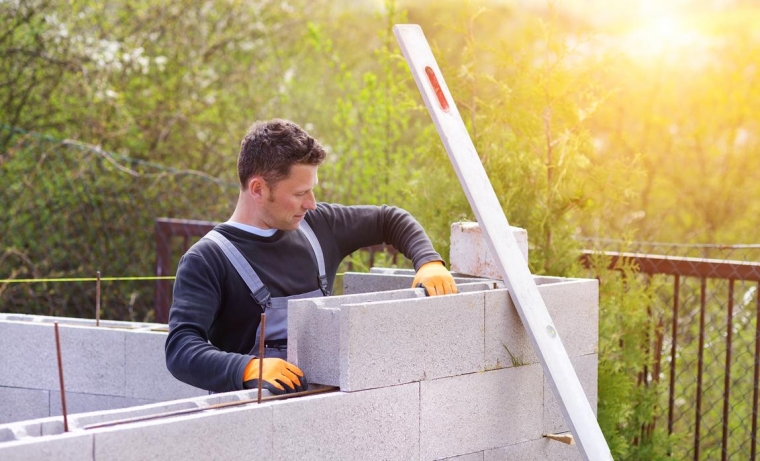
Townhouses and home units are the cheapest type of new dwelling to build by a substantial margin, according to interest.co.nz's latest New Dwelling Consent Analysis tables.
The tables analyse Statistics NZ's residential building consent data to provide an average build cost by type of dwelling (stand alone houses, apartments, retirement village units and townhouses/home units), in each the country's main urban regions.
In the second quarter of this year, the estimated average build cost (excluding land) of the 3594 townhouses/homes units consented was $347,206, compared to $576,955 for stand alone houses, $523,760 for apartments and $522,299 for retirement village units.
The figures also suggest that townhouses/units were also the most efficient to build, with an average build cost per square metre of $3106, compared to $3225 for houses, $4397 for apartments and $3846 for retirement village units.
Overall, the average estimated build cost of all the new dwellings consented in the second quarter of this year was $471,683, a record high.
Over the last five years the estimated average build cost of new homes has increased by $106,663, up 29%.
However while the build costs have gone up, the size of new homes is getting smaller.
In Q2 this year the average size of all the new dwellings consented was 145 square metres, down from 155sqm in Q2 2020 and 201sqm in Q2 2010.
In part, that is due to the increasing prevalence of multi unit developments such as apartments and terrace housing complexes, which tend to be smaller than individual houses.
But even stand alone houses are getting smaller, with the average size of houses consented declining from 192sqm in Q2 2020 to 179sqm in Q2 this year.
Go back 15 years to Q2 2010 and the average size of stand alone houses consented was 215sqm.
The full analysis tables for the whole of New Zealand are available here, while the regional tables for Auckland are here, Waikato here, Bay of Plenty here, Wellington Region here, Canterbury here and Otago here.
The comment stream on this article is now closed.
15 Comments
Demographic demand will also have influence on this as well as affordability. Smaller families later in life or childless by choice, transitory employment market, boomers downsizing & increasing alone aged as partners die off.
They are ok to rent not sure they are gd to own as a rental as it’s easy to build more hence capital gains limited and the yields are rubbish.
Townhouses and home units are the cheapest type of new dwelling to build by a substantial margin, according to interest.co.nz's latest New Dwelling Consent Analysis tables.
This ends up sounding misleading.
townhouses/units were also the most efficient to build, with an average build cost per square metre of $3106, compared to $3225 for houses
So they really cost close to the same, it's just that townhouses are a lot smaller.
Its still a roof over someone's head that cost a lot less to build. If you factor in the land cost its significantly cheaper than standalone.
We have homelessness because NIMBYs and councils insist that people build the most expensive types of housing only. Kind of like insisting that people can only own BMWs.
Living in close proximity to others brings its own issues, parking, noise, use of common facilities, some never consider their neighbours
During construction of a large block of T/H or apartments there is much higher capital outlay and holding costs until the development is complete. At least with standalone a developer (big or small) can build and sell, build and sell
What’s the difference between a town house and a home unit?
Reading about Japan - a leader in building materials for housing - and it seems that in recent years, especially since 2022, prices for many building materials have risen sharply due to global supply constraints, yen depreciation, higher energy costs, and labor shortages. This has led to a notable increase in construction costs: the price for a new custom-built house rose about 5.5% year-over-year in 2023, and materials like plywood saw price surges of up to 50%. Thus, building a new home now often requires a larger budget.
So we're not alone.
will the JCB lift rates? is inflation now wide spread?
With so many empty homes you would think this more a renovations impact?
Unfortunately they tend to externalise the parking costs onto nearby residential streets.
Ultimately the only answer will be to stop on street parking but in the meantime it's very annoying
Ultimately, a better answer is to make it more feasible to live without a car, as is the case in many European cities.
To do so would require changing the Land Transport Act 1998, and enforcement would be far too greater task to be feasible across the entire country.
People need transport for work and lifestyle , no parking will make them untenable
People need roads to drive down. Also rubbish trucks need to pick up people's rubbish, and ambulances and firetrucks need access. Roads were intended for this purpose, not as giant parking lots.
If a development can't happen without confiscating public road space to store people's cars then it shouldn't happen.
At any rate, council will just come and paint broken yellow lines eventually. So it's buyer beware if you think the freeride will continue
https://www.stuff.co.nz/nz-news/360777899/entitled-behaviour-family-cla…
Also leads to this kind of behaviour
That's why every house in London and Tokyo has a double garage.


We welcome your comments below. If you are not already registered, please register to comment
Remember we welcome robust, respectful and insightful debate. We don't welcome abusive or defamatory comments and will de-register those repeatedly making such comments. Our current comment policy is here.